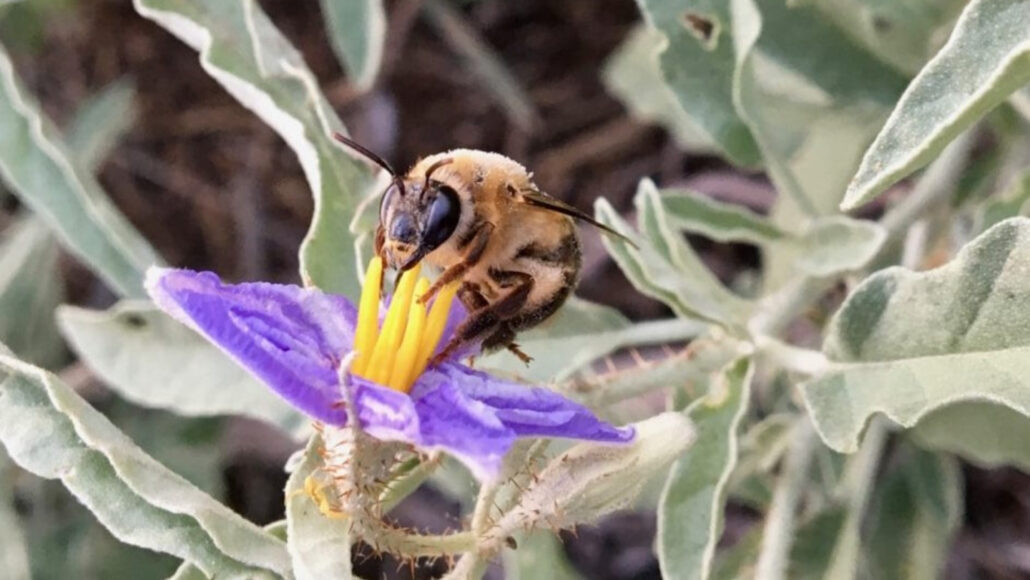Plastic Crib-Made Baby Food Infused with Beer Fragrance by Synthetic Bees

Female Ptiloglossa bees have a lot of responsibilities as single moms, but they have a secret weapon to help them out: a feathery tongue that allows them to create infant-care plastics and baby food.
Pollination ecologist Stephen Buchmann at the University of Arizona in Tucson has dubbed these bees “polyester bees” due to the chemical similarity between the bee-made plastic and human-made polyesters. The bees secrete molecules with repeating lactone compounds from a gland on their abdomens that resemble Tinkertoy pieces, with each molecule containing an “ester” structural component that gives polyester its name.
The bees use the plastic to line the nursery chambers that they dig underground for their young. They spread the gland secretion on the walls of the chambers with their paintbrush tongues, creating a transparent, tough, and crunchy layer. The plastic layer helps keep the brood chamber area moist and warm and prevents predators from getting in.
Female P. arizonensis bees only have a few weeks to create the plastic retreats and fill them with enough food to sustain their young underground for almost a year before their offspring begin their brief reproductive period aboveground. The bees’ baby food consists of their limited-edition brew of nectar and pollen, which has a beer-like aroma.
Other bee species mix their baby food with pollen and nectar to create a Play-Doh-like consistency, but the baby food stored in a cellophane bee nest is different. Bee microbiome researcher Tobin Hammer from the University of California, Irvine discovered that the baby food contains no yeast, despite the beery smell of the P. arizonensis’s plastic vats, after analyzing the collected bees, brood cells, food, and source flowers.
The bees’ baby food contains mostly lactic acid bacteria, not yeasty beer, and resembles yogurt or sauerkraut. Buchmann believes that young bees do not take their moms’ bacterial culture with them when they leave home, and they defecate when they wrap themselves in silk for their next life stage.
The microbes in the bee larvae’s gut come from the variety of microbes they encounter, mostly in flowers, or “plant genitals,” as Buchmann calls them in his new book What a Bee Knows. The microbes get winnowed down for baby food somehow, but how remains a mystery.
Despite the lack of diapers, bee larvae can survive on food that they float in for months due to the microbes that the bees pick up from the environments they visit.




